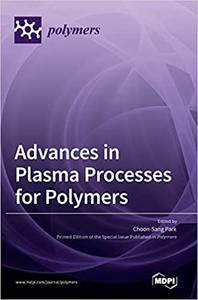
Choon Sang Park, "Advances in Plasma Processes for Polymers"
English | ISBN: 3036539166 | 2022 | 370 pages | PDF | 15 MB
Polymerized nanoparticles and nanofibers can be prepared using various processes, such as chemical synthesis, the electrochemical method, electrospinning, ultrasonic irradiation, hard and soft templates, seeding polymerization, interfacial polymerization, and plasma polymerization. Among these processes, plasma polymerization and aerosol-through-plasma (A-T-P) processes have versatile advantages, especially due to them being "dry", for the deposition of plasma polymer films and carbon-based materials with functional properties suitable for a wide range of applications, such as electronic and optical devices, protective coatings, and biomedical materials. Furthermore, it is well known that plasma polymers are highly cross-linked, pinhole free, branched, insoluble, and adhere well to most substrates. In order to synthesize the polymer films using the plasma processes, therefore, it is very important to increase the density and electron temperature of plasma during plasma polymerization.
Read more


